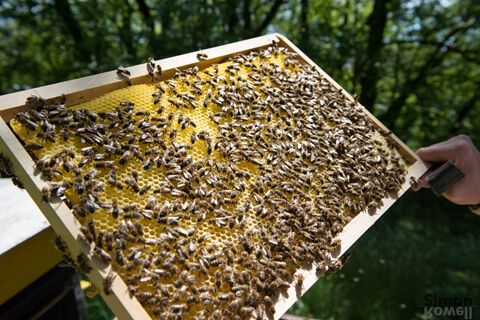A global sampling of honey finds 75% to be contaminated with neonicotinoid pesticides. Of note, the concentrations detected are below the amount authorized by the European Union for human consumption. The situation is more bleak for pollinators, however. Widespread application of neonicotinoids has been identified as a key factor responsible for the global decline in pollinators, particularly bees.

Credit: Simon Rowell Photography
Edward A.D. Mitchell et al. sought to explore the extent of exposure by testing 192 honey samples for five commonly used neonicotinoids: acetamiprid, clothianidin, imidacloprid, thiacloprid, and thiamethoxam. Samples were taken across all continents (except Antarctica), as well as numerous isolated islands. Overall, 75% of all honey samples contained at least one neonicotinoid; of these contaminated samples, 30% contained a single neonicotinoid, 45% contained two or more, and 10% contained four or five. Concentrations were highest in European, North American, and Asian samples.
While the authors emphasize that the concentrations of neonicotinoids were below levels that the EU authorizes in food and feed products, they do cite some emerging studies on the effects of neonicotinoids in vertebrates, such as impaired immune functioning and reduced growth, which may result in a re-evaluation of these restrictions. As for the effects on bees, 34% of honey samples were found to have concentrations of neonicotinoids that are known to be detrimental. These results suggest that a substantial proportion of world pollinators are probably affected by neonicotinoids.
